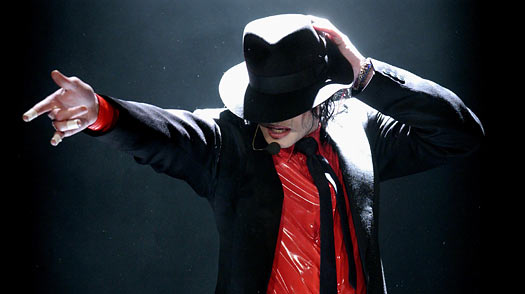
Michael Jackson performs on stage at the taping of American Bandstand's 50th Anniversary Celebration! for ABC.
When was it, exactly, that Michael Jackson completed the transition from merely eccentric to faintly creepy? It began as far back as the mid-1980s, not long after Thriller made him a star of the magnitude of Elvis Presley or the Beatles. At first, his rumored oddities seemed harmless. Trying to buy the bones of the Elephant Man? Idiosyncratic maybe, but not sinister. Sleeping in an oxygen chamber? Unusual but, hey, superstardom has its prerogatives.
By the '90s, however, a more complicated transformation of Jackson's image was under way. In the last few months of his life, he could still sell hundreds of thousands of tickets for the long series of London concerts that he hoped would mark the start of a big, lucrative comeback. But the very fact that a comeback was in order was a sign of how much the once flourishing career had been undercut by the peculiarities of the man. When he was still in his 20s, Jackson's attachment to childhood pursuits — the amusement-park rides and Disney movies and ice cream carts — could still be borderline charming, the delayed preoccupations of a child star denied a real childhood. When the guy on the merry-go-round was 50, it started to look pathological. The wigs, the skin bleaches, the face masks and parasols, the plastic surgery more thorough than what you get in the witness-protection program, the suspicious dealings with young boys — in the final decade or so of his life, Jackson accomplished his last remarkable feat: he turned himself into such a spectacle, he almost made people forget the real phenomenon he was.
Maybe it began long ago. In Moon Walk, the memoir he published in 1988, Jackson told stories of physical abuse by his father Joe, the man who whipped his boys on to stardom as the Jackson 5. As Jackson said in a later interview, "He practiced us up with a belt in his hand." Before long, Jackson had two well-established and irreconcilable personas. There was the eternal boy so sensitive that his voice in any love song could end up on the verge of sobs. And there was the raging adult with his yelps and war whoops and his dance moves full of spring-loaded aggression. Like Mike Tyson, he had a child's high-pitched voice and the pent-up furies of a man. The original version of the video for his song "Black or White" included a long pantomime of rage in which, for four minutes, he smashed up a car, grabbed his crotch and carried out one of his angular, hip-jabbing dances in silence. He quickly thought better of it and had the segment cut — maybe because it said too much.
At the time, he was still indisputably a star, if an unusual one. Jackson's 1991 album, Dangerous, debuted at No. 1 with big pop anthems like "Heal the World" and jaunty, darting tracks like "Black or White" — a song that led a lot of people to notice that over time Jackson's skin had been getting significantly lighter. Eventually he explained that he suffered from vitiligo, a pigment disorder that causes discolored patches on dark skin. He claimed to be compensating with skin bleaches to turn himself a more uniform color.
But the real trouble started in 1993, when it emerged that Jackson was being investigated on suspicion of child molestation by Tom Sneddon, the district attorney of Santa Barbara County, California. Sneddon even ordered the police to photograph Jackson's genitals to see if they had the identifying marks of vitiligo that Jackson's accuser, age 13, claimed to have seen. But before Sneddon could bring criminal charges, the boy's father brought a civil suit against Jackson on behalf of his son. The investigation and lawsuit put all the question marks about Jackson on display — his over-the-top identification with children, his particular fascination with boy actors like Macaulay Culkin and Emmanuel Lewis, his habit of conducting sleepovers with "special friends," the absence of any known adult sexual relationship in his life, male or female. From the fastness of his Neverland ranch, Jackson issued to the public an anguished videotaped statement protesting his innocence, but he eventually settled the suit for a reported $20 million.